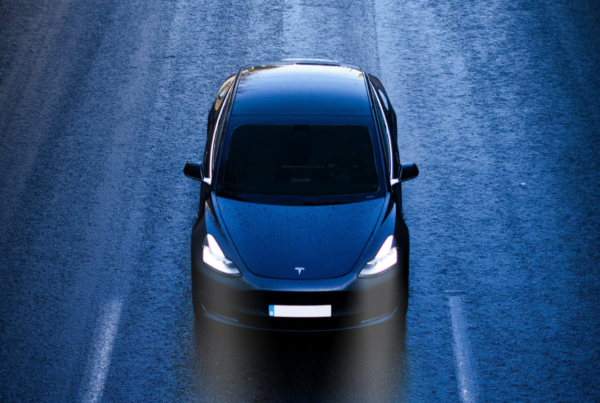New system update available. To install, please stop the vehicle in a safe area and click on install. It will take a few minutes, Thank you
Yes, it actually says “vehicle”. We are all familiar witch such notifications when using computers, smartphones and tablets, but many drivers are already accustomed to receiving them directly on the dashboard of multimedia screen of the car. Therefore, in the not too distant future, this will become the norm for all drivers, provided that fleet renewal programmes are successfully implemented.
But what is this innovation really all about?
In summary, next-generation vehicles will be equipped with internet connectivity (via 4/5G networks or WiFi) in order to have a system that is always up-to-date.
Let us examine the project in greater detail, starting from a precise moment in history.
Since 2018, newly registered vehicles in the EU have been equipped with the eCall system. This system enables the seamless and immediate communication of an emergency situation to the Europe-wide 112 emergency number ì, without the need for additional steps. This obligation has led to increased investment by car manufacturers in the development of increasingly connected vehicles. The technologies are numerous, complex and constantly evolving, as are the purposes, benefits and features perceived by motorists.
The most common acronym is “Automotive OTA”, i.e. Over The Air, which summarises the concept of wireless connection and in turn covers different aspects such as firmware, applications, satellite maps and vehicle configuration.
Key Advantages
The primary advantages of a vehicle equipped with these technologies are twofold, impacting both drivers and manufacturers. By ensuring accessibility for system upgrades, the vehicle enhances its safety, longevity and driving comfort.
Security: stress-free updates
Firstly, OTA would make the car safer. Indeed, when a vehicle leaves the factory, any safety update would require a lengthy recall campaign, which would be costly for manufacturers and frustrating for owners. However, if safety updates – which we all hope will never be necessary – could be applied simply by updating the firmware while the car is parked and has sufficient battery charge, the time and cost would be reduced, as would the perceived inconvenience.
Longevity: the car that improves over time
The vehicle is also more durable. As with safety, the availability of upgrades has the potential to enhance the driving experience in cases where upgrades are installed in older vehicles to features and capabilities that were not technically available at the time of vehicle design, provided that the hardware is compatible.
Comfort: customization just a click away
Finally, the vehicle would also benefit in terms of driving comfort. Here, the situation become interesting. As consumers, we typically leave the dealership satisfied with our customised vehicle. However, if we change our mind or realise that the vehicle does not satisfy our new requirements, what recourse do we have? The introduction of Automotive OTA in a connected and properly prepared vehicle – the direction taken by manufacturers is precisely to ensure scalability- will allow us to purchase new features online, even if only as passengers, permanently or temporarily, to enhance the driving experience and have them delivered to us instantly via an update.
Concrete examples of OTA functionalities
Some concrete examples of this use include: heated seats for skiing holidays, new driver assistance services, the purchase of spare parts or accessories, extra horsepower for the engine, advanced reporting and diagnostics directly on the smartphone, he transformation of the vehicle from private to rental, streaming on demand and many other options.
Cars already equipped with OTA technology
This scenario is already a reality for high-end cars, mostly hybrid or full electric, and the use cases are even more numerous and interesting. For instance, the Volkswagen ID.4 all Tesla vehicles[1], Audi’s navigator maps and the Ford Mustang Mach-E are prime examples.
[1] The improved acceleration package of some of the Californian company’s models, such as the Model 3, was also a topic of discussion in the media. In fact, By paying approximately $2,000 via Tesla’s app, the acceleration to 0-96 km/h in just 3.9 seconds was successfully implemented.
The technology behind the OTA
In terms of vehicle technologies, the key points relate to the on-board presence of a Telematic Control Unit, which ensures network connectivity. This is supported by a vehicle architecture that can autonomously and safely manage the installation of updates. Interaction with the driver would be constant and certain, and there would be no failures resulting from botched updates.
Cybersecurity and Business Intelligence
Finally, two further aspects are worth mentioning: cyber security and business intelligence. Security is becoming an essential requirement, and it is clear that motorists will have a strong interest in this, both in the narrow sense and in privacy issues. This will present a growing challenge, as it has for PCs and smartphones. Conversely, Business Intelligence will be a consequence of the substantial amount of data that will be possible to collect, such as, for example, sales and usage statistics of value-added services offered on vehicles. It will also benefit drivers by applying suggestions based on their habits or those of anonymous drivers with similar behaviour, as is already the case in social networks.
The role of the cloud and data management
In the cloud, concurrently, manufacturers’ systems oversee the master data for the entire vehicle fleet and preserve consistent software/firmware configurations for each vehicle type. This is so that, according to technical necessity, – such as house-initiated campaigns or commercial opportunities such as the purchase of new services by motorists – it is possible to plan update campaigns, launch them and monitor both their overall and vehicle-by-vehicle outcomes.
The future of mobility is connected.
In conclusion, the writer believes that connected vehicles and related services will be the main novelty and area of innovation in the industry for the coming decades, and that most manufacturers’ efforts will focus on this area.
Giuseppe Iorio
Read the other articles in the June 2023 issue of spaceO:
- The history of innovation: Tesla
- Music & IT: The evolution of amplifiers
- Interview with our colleagues: Valerio Ruggiero
- Gaming: AI & gaming
- Innovation & Apps: Wibo
- Fairs: We make future









